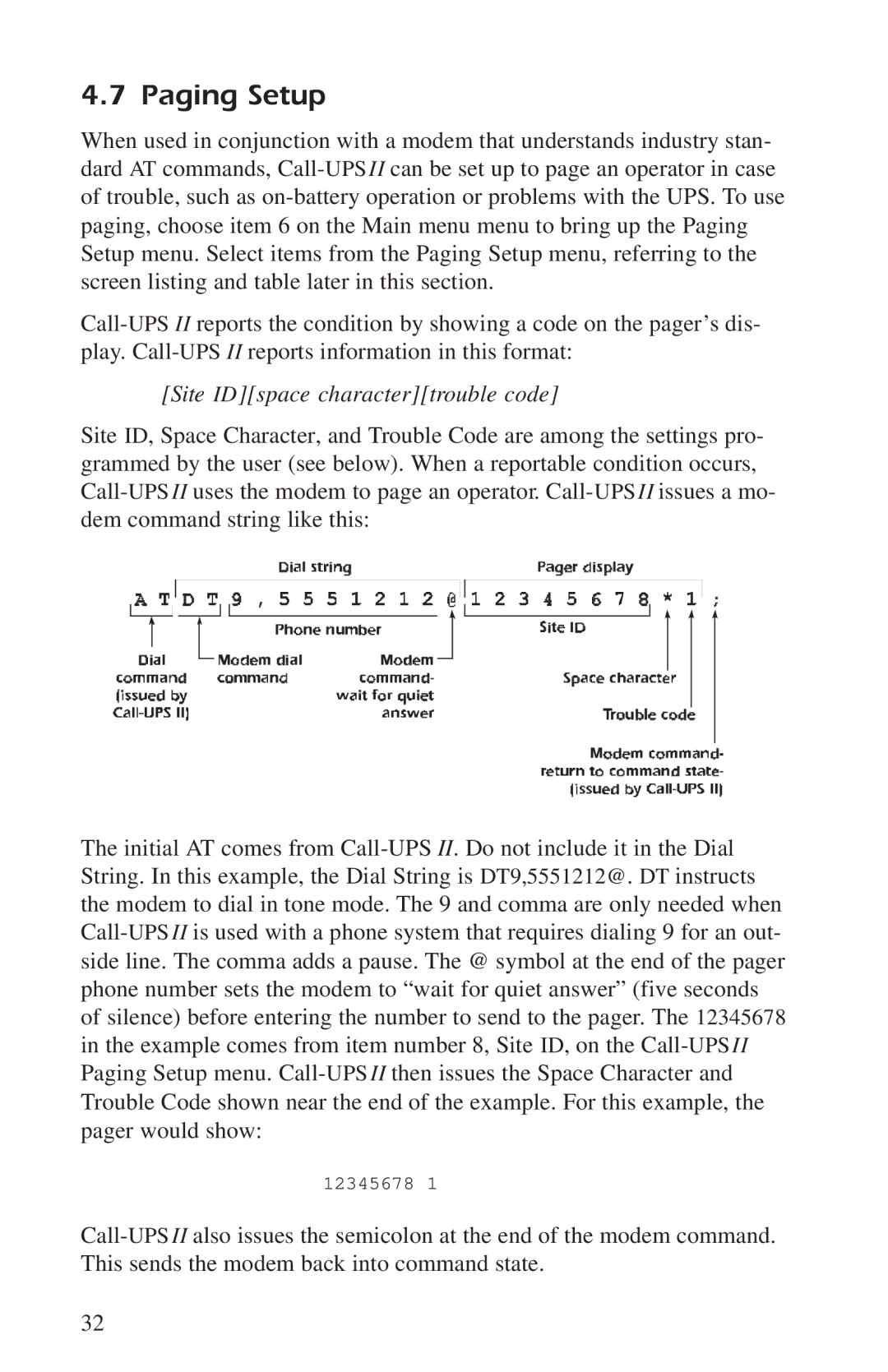
4.7 Paging Setup
When used in conjunction with a modem that understands industry stan- dard AT commands, Call-UPSII can be set up to page an operator in case of trouble, such as on-battery operation or problems with the UPS. To use paging, choose item 6 on the Main menu menu to bring up the Paging Setup menu. Select items from the Paging Setup menu, referring to the screen listing and table later in this section.
Call-UPSII reports the condition by showing a code on the pager’s dis- play. Call-UPSII reports information in this format:
[Site ID][space character][trouble code]
Site ID, Space Character, and Trouble Code are among the settings pro- grammed by the user (see below). When a reportable condition occurs, Call-UPSII uses the modem to page an operator. Call-UPSII issues a mo- dem command string like this:
The initial AT comes from Call-UPS II. Do not include it in the Dial String. In this example, the Dial String is DT9,5551212@. DT instructs the modem to dial in tone mode. The 9 and comma are only needed when Call-UPSII is used with a phone system that requires dialing 9 for an out- side line. The comma adds a pause. The @ symbol at the end of the pager phone number sets the modem to “wait for quiet answer” (five seconds
of silence) before entering the number to send to the pager. The 12345678 in the example comes from item number 8, Site ID, on the Call-UPSII Paging Setup menu. Call-UPSII then issues the Space Character and Trouble Code shown near the end of the example. For this example, the pager would show:
12345678 1
Call-UPSII also issues the semicolon at the end of the modem command. This sends the modem back into command state.

